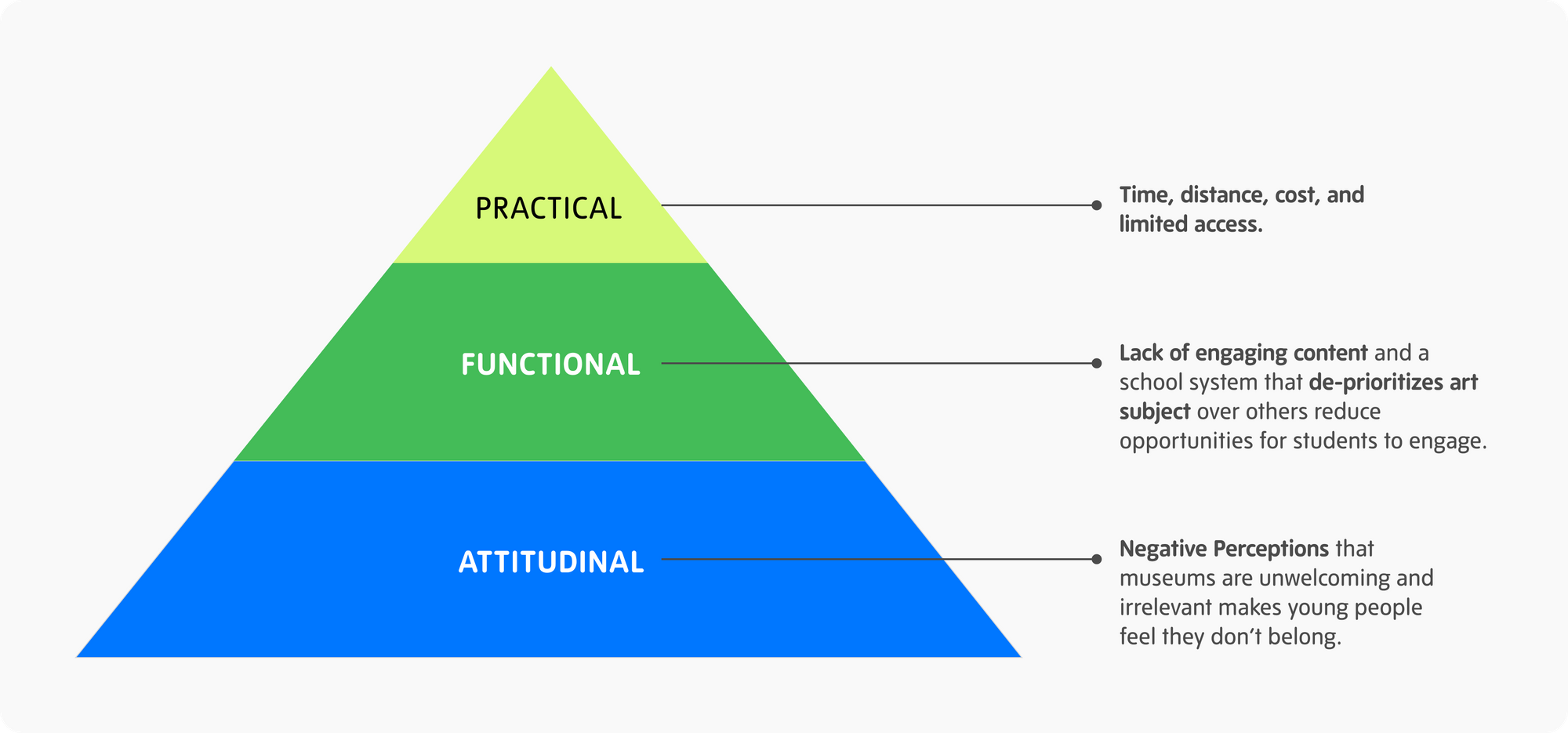
ROLE
Service Designer
SKILLS
User Research, Concept Development, Service Roadmapping, Stakeholder Co-creation
TIMELINE
Oct 2024 -> Feb 2025
TEAM
Maria Luisa Castro, Keiji Ichijo
Jessica Wonomihardjo, Yi-Hsuan Wu
Redefining how Tate nurtures creative confidence and lifelong engagement among teens.
Tate Teens investigates how Tate can better serve and sustain relationships with 13–17-year-olds, a group often underserved in traditional museum programming. The project establishes a service pathway that strengthens access, participation, and creative development, supporting long-term cultural engagement for future generations.
Background & Context
Understanding Why Art Feels Out of Reach
Teenagers are some of the most curious and creative individuals, yet they often feel disconnected from art institutions. For many, museums can seem too formal, academic, or reserved for others, making it hard to find personal meaning or connection. Through interviews and surveys we uncovered three layers of barriers that shape this disconnect: practical, functional, & attitudinal.

Access alone isn’t enough. Teens need experiences that help them feel capable, curious, & creatively seen.
The Role of Intermediaries
Schools and families are the primary gateways for teenagers to access art and often the only avenue to engage with creative experiences. Yet, not all schools provide sufficient arts education, and teachers may lack the confidence or resources to inspire students. Peers also play a crucial role. When friends are involved, new experiences feel less intimidating and provide a social safety net that encourages participation. Building on these existing networks is essential for Tate to help teenagers discover art in ways that feel both approachable and authentic.
THEN WE REALIZED...
A Gap Within Tate's Offerings
Beyond these individual and social barriers, we identified a structural challenge within Tate’s ecosystem: a gap in programming for teenagers. Tate already serves two audiences well: children through Tate Kids and young adults through Tate Collective.
Yet between them lies an overlooked group navigating one of life’s most formative transitions. Teens aged 13–17 are defining independence and identity, but within Tate’s current offerings, they lack a clear entry point that speaks to their needs and autonomy. By strengthening partnerships with schools and supporting teachers in arts education, Tate can build a bridge between their current offerings and nurture lifelong creative engagement.













